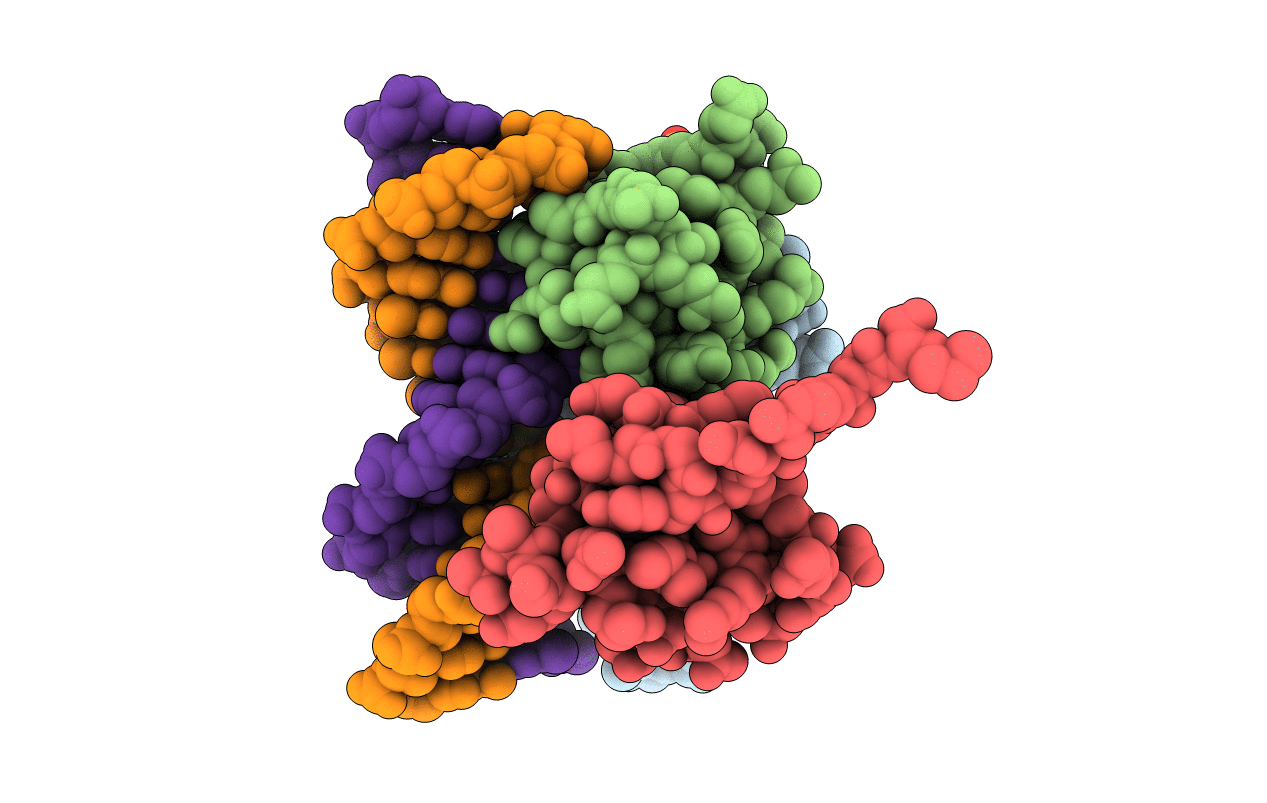
Deposition Date
2021-01-11
Release Date
2021-11-10
Last Version Date
2024-01-31
Entry Detail
PDB ID:
7BHY
Keywords:
Title:
DNA-binding domain of DeoR in complex with the DNA operator
Biological Source:
Source Organism:
Bacillus subtilis subsp. subtilis str. 168 (Taxon ID: 224308)
Host Organism:
Method Details:
Experimental Method:
Resolution:
2.30 Å
R-Value Free:
0.26
R-Value Work:
0.20
R-Value Observed:
0.20
Space Group:
P 42 21 2


